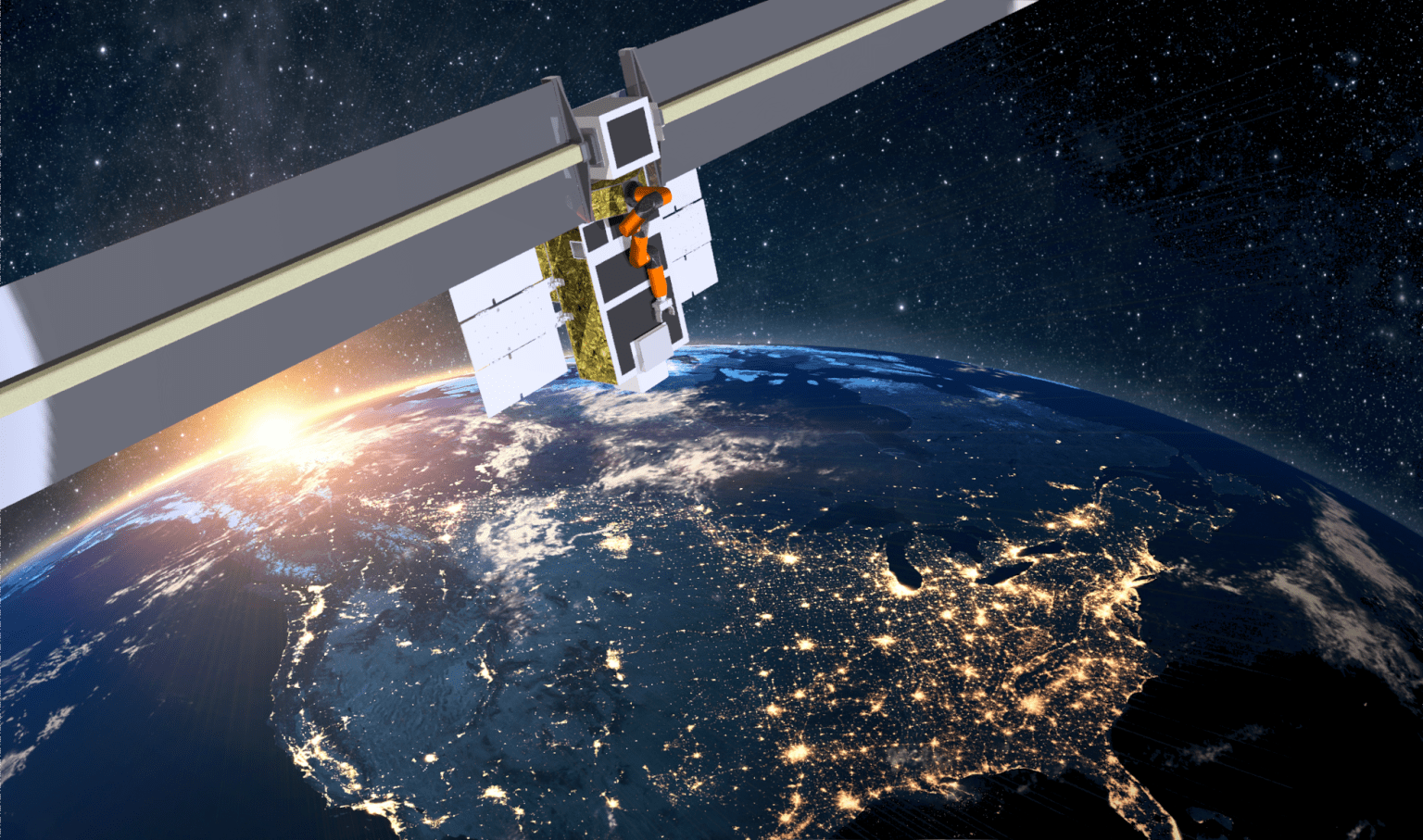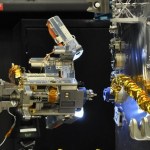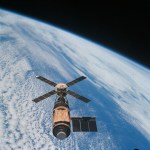
In-Space Servicing, Assembly, and Manufacturing (ISAM)
Robots are poised to make what was once thought to be impossible in space a reality.
From extending the lifespan of satellites, to assembling massive life-seeking telescopes in space, to refueling and repairing spacecraft on journeys to distant locations, the possibilities are endless. To achieve these endeavors it is essential to demonstrate foundational capabilities – servicing, assembly, and manufacturing.
Servicing
Assembly is the practice of gathering two or more parts together in space into a single, functional aggregate structure. A suite of assembly capabilities allows us to launch individual parts to space separately and bring them together, thereby overcoming the constraints of rocket fairing volume limitations.
The ability to launch individual components of a large structure and robotically assemble them in space brings seemingly impossible concepts within reach. This capability allows for assembly of habitats in places further away than low-Earth orbit and opens up the door for constructing large telescopes and other platforms.

Assembly
Assembly is the practice of gathering two or more parts together in space into a single, functional aggregate structure. A suite of assembly capabilities allows us to launch individual parts to space separately and bring them together, thereby overcoming the constraints of rocket fairing volume limitations.
The ability to launch individual components of a large structure and robotically assemble them in space brings seemingly impossible concepts within reach. This capability allows for assembly of habitats in places further away than low-Earth orbit, and opens up the door for constructing large telescopes and other platforms.

Manufacturing
Manufacturing is the fabrication of components in space as the need arises. This capability allows for greater adaptability in dealing with unforeseen challenges and has the potential to eliminate the need to launch as many components (including contingency components) upfront. It also allows for the production of unprecedented monolithic structures, such as jointless thirty-meter truss beams. On-orbit coating applications and nano-manufacturing allows for surface coatings to be applied or renewed to recover optical and thermal properties.

ISAM Flight Projects
ISAM Research

Automated Reconfigurable Mission Adaptive Digital Assembly Systems (ARMADAS)
The Automated Reconfigurable Mission Adaptive Digital Assembly Systems (ARMADAS) project is developing software and hardware that will be able to autonomously assemble materials to make a variety of functional structures such as habitat structures, large antennae arrays, and even a spaceport.<br>
Applications
Large Telescopes
Starshades are large, deployable structures that can help in the search for life on planets outside our Solar System.
Being able to launch the components of a large, deep-space telescope separately and assemble them in space can break the current constraint of telescopes needing to be small enough to fit on a single launch vehicle. Technologies demonstrated by ISAM are laying the groundwork for in-space assembled observatories to peer deeper into our universe and possibly find life beyond Earth.
Starshades
Starshades are large, deployable structures that can help in the search for life on planets outside our Solar System.
Technologies demonstrated by ISAM are laying the groundwork for in-space assembled observatories to peer deeper into our universe and possibly find life beyond Earth. With the ability to launch components of a large, deep-space telescope separately and assemble them in space, telescopes will no longer need to be small enough to fit on a single launch vehicle.
Persistent Platforms
On-orbit Assembly, and Manufacturing can be used to construct support structures in space, thereby enabling persistent orbital platforms that can be repeatedly reconfigured and renewed. Persistent platforms can efficiently host short-term technology demonstration payloads launched without dedicated spacecraft. These payloads would rely on the platform for all engineering resources, including removal and disposal at the end of the demonstration and then freeing up the position for the next payload.
Persistent platforms can also provide long-term hosting of complementary instrument suites that provide synergistic science from overlapping fields of view. Furthermore, unmanned persistent platforms can provide considerably better pointing knowledge and stability than the international space station (ISS), without manned safety requirements and obstructions. A robotically equipped persistent platform creates a flexible environment for adapting and reconfiguring payloads, and continuously expanding On-orbit resources.
Sustainable Exploration
There are three basic needs for sustainable space exploration: consumable replenishment and component repair (servicing), construction of large and precise structures (assembly), and creation of components from feedstock or in-situ resources (manufacturing) to break the dependence on earth supply chain logistics.
ISAM capabilities are critical to developing sustainable space architectures that will allow spacecraft to live longer and journey farther, as well as enabling a sustained human presence in space. Robotic ISAM technologies facilitate the replenishment of supplies that run out of spacecraft fuel, to coolant, to oxygen. They can help ensure the longevity and operability of spacecraft and life support systems with unplanned repair and planned maintenance.
ISAM State of Play
The ISAM State of Play document is a survey of past, present, and near future ISAM capabilities across industry and government agencies. It was produced to promote awareness of the breadth of ISAM investments and developments within the aerospace community, with the hope of fostering dialog, partnerships, and innovation. The ISAM State of Play can inform architecture studies, mission formulation, and pathfinding options to establish an economic ISAM ecosystem.
The 2024 ISAM State of Play is the fourth release of the document and provides significant updates, including the addition of three new cross-cutting capability areas with 76 activities. The document characterizes the state of ISAM through its collection of 312 functional capability area activities, 56 facilities, and 114 developers. Best efforts are made to incorporate all pertinent information. Comments, corrections, or additions are encouraged to ensure the current state-of-the-art is properly captured. Any recommendations will be assessed and incorporated into future editions of the ISAM State of Play, which are scheduled to be released on a yearly cadence. Feedback for the ISAM State of Play can be provided to the authors through email.
View the 2024 ISAM State of Play Document
ISAM Technology Catalog
NASA’s Technology Transfer Program ensures that innovations developed for exploration and discovery are broadly available to the public, maximizing benefits nationwide. Whether you’re looking to start a new company, enhance an existing product, or create a new product line, you can gain a competitive edge in the marketplace by putting NASA technology to work for you.
The ISAM Technology Catalog provides domestic companies with insight and access to technology NASA has developed in support of spaceflight missions, technology demonstration, or in pursuit of concept development. By transferring technology as it is developed rather than only after it has been demonstrated in orbit, NASA expedites new capabilities into the commercial market and promotes U.S. global leadership in ISAM capability. Organizations interested in commercializing ISAM technologies are invited to contact the points of contact listed in the catalog to discuss how they can be adapted for other spaceflight and surface applications.
The full version of the ISAM Technology Catalog is available to domestic companies by contacting Patty Manalansan at NASA Goddard Space Flight Center, who controls the release of the catalog. An NDA is required as the catalog contains export controlled technical data.
Workshops and Events
Beginning in 2016, NASA’s Space Technology Mission Directorate has hosted yearly opportunities for industry, academia, and other government agencies to share critical developments in ISAM. These events seek to spark collaboration between domestic groups dedicated to ISAM technologies and develop a shared vision for the future of ISAM services.
Information about recent ISAM workshops may be found below, followed by a calendar of other relevant events. Information about future workshops will be posted here when available.








































